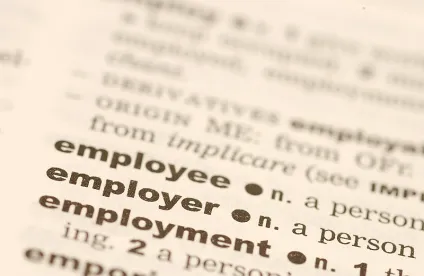The National Labor Relations Board has made good on its recent promise to move forward with rulemaking to re-establish the decades-old joint employer standard in place prior to the Board’s 2015 decision in Browning-Ferris Industries of California, Inc., d/b/a BFI Newby Island Recyclery, 362 NLRB No. 186 (2015) (Browning-Ferris or BFI), petition for review docketed Browning-Ferris Indus. of Cal. v. NLRB, No.16-1028 (D.C. Cir. filed Jan. 20, 2016). On Sept. 13, the Board announced that it is issuing a proposed rule (to be published in the Federal Register on September 14, 2018) to establish an updated standard for determining joint employer status under the National Labor Relations Act. Under the proposed rule, “[a]n employer, as defined by Section 2(2) of the National Labor Relations Act (the Act), may be considered a joint employer of a separate employer’s employees only if the two employers share or codetermine the employees’ essential terms and conditions of employment, such as hiring, firing, discipline, supervision, and direction.” Notably, the Board’s proposed rule clarifies that a putative joint employer “must possess and actually exercise substantial direct and immediate control over the employees’ essential terms and conditions of employment in a manner that is not limited and routine.” No doubt relieved to see a return to the pre-BFI standard, employers will be further delighted to discover that under the proposed rule, the Board is “presently inclined to find, consistent with prior Board cases, that even a putative joint employer’s ‘direct and immediate’ control over employment terms may not give rise to a joint-employer relationship where that control is too limited in scope.”
By way of background, the Board’s December 2017 decision in Hy-Brand Industrial Contractors, Ltd, 365 NLRB No. 156 (December 14, 2017), overruled the controversial joint employer standard that was announced in BFI. However, the Hy-Brand case was vacated by the NLRB on February 26, 2018, for an alleged conflict of interest due to Board Member Emanuel’s participation in the case, leaving the Browning-Ferris standard intact. (A detailed discussion of the Browning-Ferris and Hy-Brand decisions can be found here.
According to the Board’s press release, the proposed rule “reflects the Board majority’s initial view, subject to potential revision in response to public comments, that the National Labor Relations Act’s intent is best supported by a joint-employer doctrine that does not draw third parties, who have not played an active role in deciding wages, benefits, or other essential terms and conditions of employment, into a collective-bargaining relationship for another employer’s employees.” As set forth in the unpublished proposed rule, the Board majority believes public rulemaking best enables the Board to “clarify what constitutes the actual exercise of substantial direct and immediate control…apart from the facts of a particular case that might come before the Board for Adjudication” so that both unions and employers will possess greater certainty beforehand as to when [they] may proceed to reach decisions without fear of later evaluations labeling [their] conduct an unfair labor practice.” The majority was also concerned that such an important issue would likely remain unsettled for employers, employees and unions alike as a result of the politically-driven instability in the Board’s member composition, noting “the uncertainty that the legal regime may change on a moment’s notice (and possibly retroactively) through the adjudication process.”
Member McFerran, the lone-remaining democratic-appointee on the Board, authored a sharp and wide-ranging dissent, noting that the “majority’s proposed inclusion of a ‘direct and immediate’ control requirement in the joint-employer standard would hardly result in an easy-to-apply test,” and further challenged the underlying basis for the majority’s decision to revisit BFI, stating that “[t]oday’s notice specifically solicits empirical evidence from the public: information about real-world experiences, not desk-chair hypothesizing. And so the question now is whether the record in this rulemaking ultimately will support the assertions made about Browning-Ferris and its supposed consequences – or, instead, will reveal them to be empty rhetoric.”
According to the proposed rule, the public will have the opportunity to comment on the Board’s proposal, and responses must be received within 60 days of the notice’s publication in the Federal Register.



 />i
/>i


